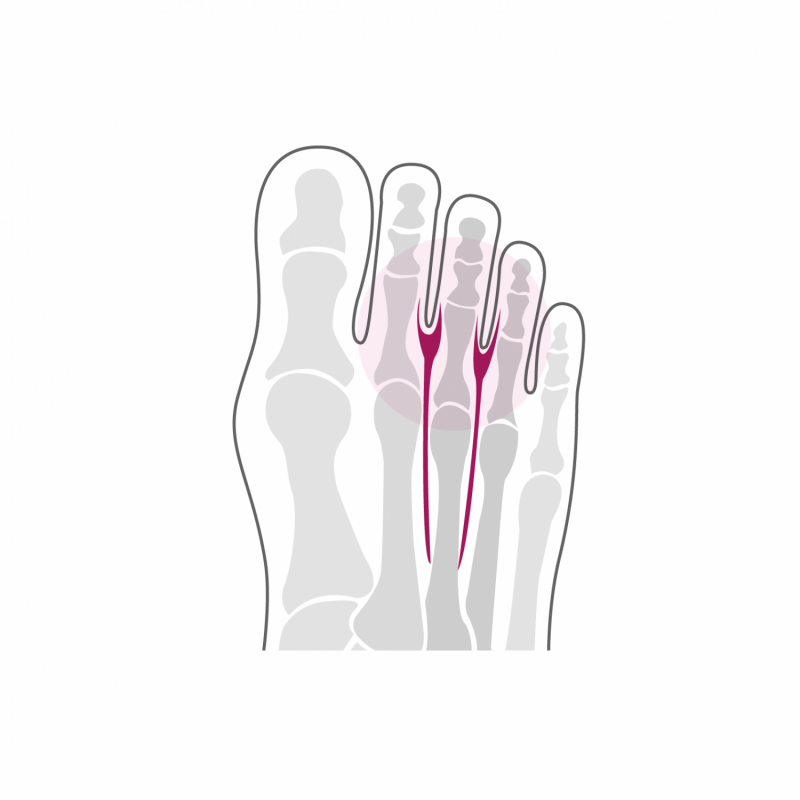Morton’s Neuroma

Morton's neuroma is a disease of the forefoot manifested by pain located plantarly at the base of the toes, most often between the 2nd and 3rd and between the 3rd and 4th toes. The cause of the development of a Morton's neuroma is not fully established, but its appearance is often linked to constant added pressure on the forefoot. It then forms a fibrous scar tissue which will gradually exert pressure on the nerve and cause symptoms. These can be very varied and range from a slight loss of sensitivity in the area of the affected toes to severe pain most often occurring after 30 to 40 minutes of effort on the foot. Wearing narrow shoes will accelerate the onset of symptoms and the pain is often relieved by removing the shoe. The diagnosis is made on the basis of clinical examination and is confirmed by an MRI (magnetic resonance imaging) examination or an ultrasound of the forefoot.
Treatment
The conservative treatment consists of a placement of a plantar support aiming to discharge the painful sensation. If this measure is insufficient, a cortisone-based infiltration of the interdigital space concerned can in certain cases lead to a complete disappearance of the symptoms. If symptoms persist despite adequate conservative treatment, surgical excision of the neuroma should be offered. The pain due to compression of the nerve then disappears completely. There is a loss of sensitivity in the affected toe area, but this decrease in sensitivity is less and less felt over time. The function of the affected toes is not affected in any way and there is no loss of strength.
The surgical procedure lasts between 20 and 30 minutes and can be performed under general or spinal anesthesia. It can be combined with local anesthesia of one of the main nerves of the foot (popliteal block), which significantly reduces post-operative pain. It takes one night of hospitalization. Walking is done immediately from the first post-operative day under full load in a shoe with a rigid sole to be worn for 2 weeks. The stitches are removed 15 days after the operation and clinical control is carried out 6 weeks after the operation.
Resumption of walking in conventional shoes is done from the 3rd post-operative week. At this time, physiotherapy treatment aimed at reducing swelling of the foot (lymphatic drainage) is put in place. Resumption of activities such as swimming, cycling or moderate walking is possible as early as the 7th post-operative week. More restrictive activities on the foot such as running or longer hikes can be considered from the 4th month after the intervention. The forefoot will continue to refine and soften for up to six months post-operatively and gradually return to full function.
